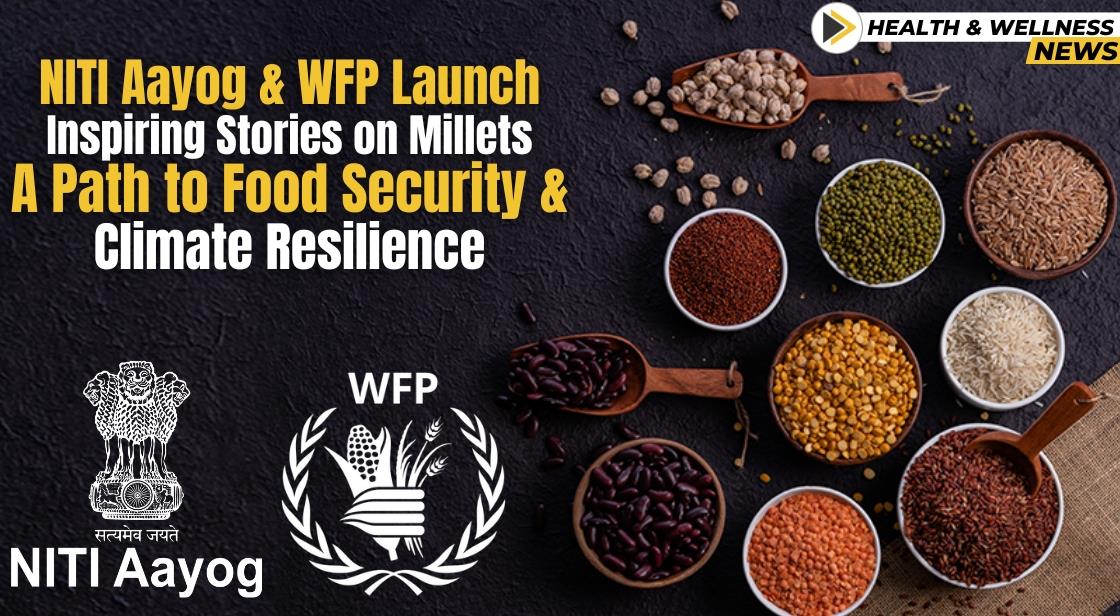NITI Aayog & WFP Launch Inspiring Stories on Millets: A Path to Food Security & Climate Resilience

News Synopsis
In a significant initiative, a compilation of field narratives highlighting experiences from Asia and Africa, including India, was introduced in New Delhi. The compendium aims to facilitate capacity building and widespread adoption of best practices in millet cultivation globally.
The compilation features compelling case studies offering insights into the adoption of millets, a traditional and climate-resilient crop, echoing India's efforts during the International Year of Millet (IYM). This marks the successful realization of the Mapping and Exchange of Good Practices (MEGP) Initiative for Millets Mainstreaming in Asia and Africa, initiated in July 2022 through collaboration between NITI Aayog and the World Food Programme (WFP).
Suman Bery, Vice Chairman of NITI Aayog, highlighted India's successful promotion of millets for climate resilience, food security, and the livelihoods of small farmers, particularly women, during the IYM 2023. He emphasized that the showcased stories on millet mainstreaming would inspire practitioners and institutions to glean insights from diverse good practices.
"Millet must be made more fashionable or popular as they have health benefits, especially for lifestyle-related choices," he advocated.
Elisabeth Faure, Country Director, WFP, India, underscored that collaboration, involving expert deployment, knowledge transfer, policy dialogue, and study visits, is a crucial strategy for WFP in India to enhance the food security of small farmers.
The compendium is expected to serve as a valuable reference for integrating millets into mainstream food systems, offering insights for informed decision-making, fostering exchange through South-South Cooperation, and promoting policy dialogues.
Discussions during the launch included promoting millets as a staple food, achieving dietary diversification through millets, and focusing on increased investments and productivity.
Millets, including Bajra, Jowar, and Ragi, among others, are among the oldest foods known to humans. They were among the first crops domesticated in India, with historical evidence suggesting their consumption during the Indus Valley Civilization.
Quotes That Resonate:
- Suman Bery, Vice Chairman, NITI Aayog: "India's successful promotion of millets during IYM 2023 for climate resilience, food security, and small farmer livelihoods, particularly women, is showcased in these stories. They will inspire practitioners and institutions to learn from diverse good practices."
- Elisabeth Faure, Country Director, WFP, India: "Collaboration through expert deployment, knowledge transfer, policy dialogue, and study visits to strengthen the food security of small farmers is a key strategy for WFP in India."
A Roadmap for Millet Integration:
The compendium serves as a comprehensive guide for integrating millets into mainstream food systems. It provides crucial insights for informed decision-making and facilitates knowledge exchange through South-South Cooperation and policy dialogues. Discussions held during the launch focused on promoting millets as a staple food, diversifying diets through millets, and enhancing investments and productivity in this sector.
Millets: A Legacy of Resilience:
Millets (Bajra, Jowar, Ragi, etc.) are some of the oldest foods known to humankind. Evidence suggests their consumption in India as far back as the Indus Valley Civilization. Millet is a collective term for small-seeded grasses, often called Nutri-cereals or Dryland-cereals. Examples include Sorghum (Jowar), Pearl Millet (Bajra), Finger Millet (Ragi), Little Millet (Kutki), Foxtail Millet (Kakun), Proso Millet (Cheena), Barnyard Millet (Sawa), Kodo Millet (Kodon), and others.
You May Like









